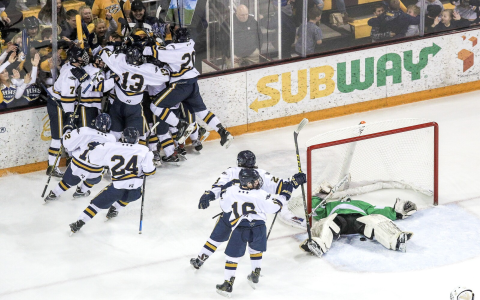The recent unveiling of Eastern Exposure Hockey has sparked debates within the hockey community. As the sport faces changing dynamics, fans and experts alike are questioning whether this new style will shape the future of ice hockey. The emergence of this innovative form, rooted in the principles of fast, aggressive play, promises to attract younger audiences and reinvigorate the sport. However, only time will tell if it has the staying power to change the landscape of hockey as we know it.
This past weekend, a groundbreaking tournament showcased Eastern Exposure Hockey, featuring teams from across the region. The exciting atmosphere drew large crowds, highlighting the sport’s ability to unite fans in passionate devotion. Players exhibited remarkable skills, while relentless coaching strategies brought forth a thrilling blend of speed and precision. Tim Barker, head coach of the New England Sharks, emphasized this point: “Our game demands not just physical skills but also mental agility. The players who adapt to this faster pace can truly shine.”
One standout player during the tournament was Jake Anderson, known for his impressive skating ability and strategic thinking. Anderson clearly understood the necessity of adapting quickly. “In Eastern Exposure Hockey, every second counts,” he noted. “You have to stay alert and make quick decisions. It’s a completely different game compared to traditional play.” His performance contributed significantly to his team’s success, further validating the principles behind this emerging style.
As thrilling as this new format is, it also introduces several complexities that merit deeper reflection. Traditional hockey, with its unique set of rules and strategies, has stood the test of time. For some, adapting to Eastern Exposure Hockey may not be without challenges. The rapid pace and emphasis on offense transform the way players think about their roles on the ice. Veteran player Mike Jennings shared his concerns: “I love the intensity, but with that pace, there’s less time for traditional plays. We’ll have to relearn how we approach games entirely.”
Moreover, the background of players participating sheds light on this evolving narrative. Many featured athletes in the tournament have come from conventional leagues, bringing with them years of experience that they must now reshape. Seeing players like Sarah Chen, who has excelled in numerous national championships, transition into this new format was particularly noteworthy. “I think this is the future,” she said. “It does take some getting used to, but the excitement is unmatched.”
Field conditions have also played a role in the design of Eastern Exposure Hockey. Unlike traditional venues, these games are often held in smaller arenas, which can amplify the intensity of play. Coaches like Frank Wise have embraced these settings: “Smaller rinks mean faster action, more goals, and an electric atmosphere. Fans love it.” However, the implications for player safety and sustainability should not be overlooked as the sport evolves.
Amidst this transformation, it’s vital to recognize the emotional investment players make in this new style. Players express a wide range of feelings about the shift. Some view it as an exciting opportunity, while others are cautious about how steep the learning curve could be. Undoubtedly, the adaptation process will challenge competitors but may ultimately enrich the sport. As Anderson passionately stated, “We’re not just playing a game; we’re building something new together. That’s thrilling.”
As Eastern Exposure Hockey continues to gain traction, fans are left to wonder: will this be the evolution the sport needs? The combination of speed and strategic plays captivates audiences, suggesting a bright future. As this innovative style flourishes or falters, it’s clear that the discussions surrounding it will remain vital. Perhaps the real question at hand is: how will hockey evolve to keep its rich history while embracing change?
For our readers, what are your thoughts on Eastern Exposure Hockey? Do you believe it could become the future of the sport, or do you think traditional hockey has too strong a hold on the game? Share your views below!















